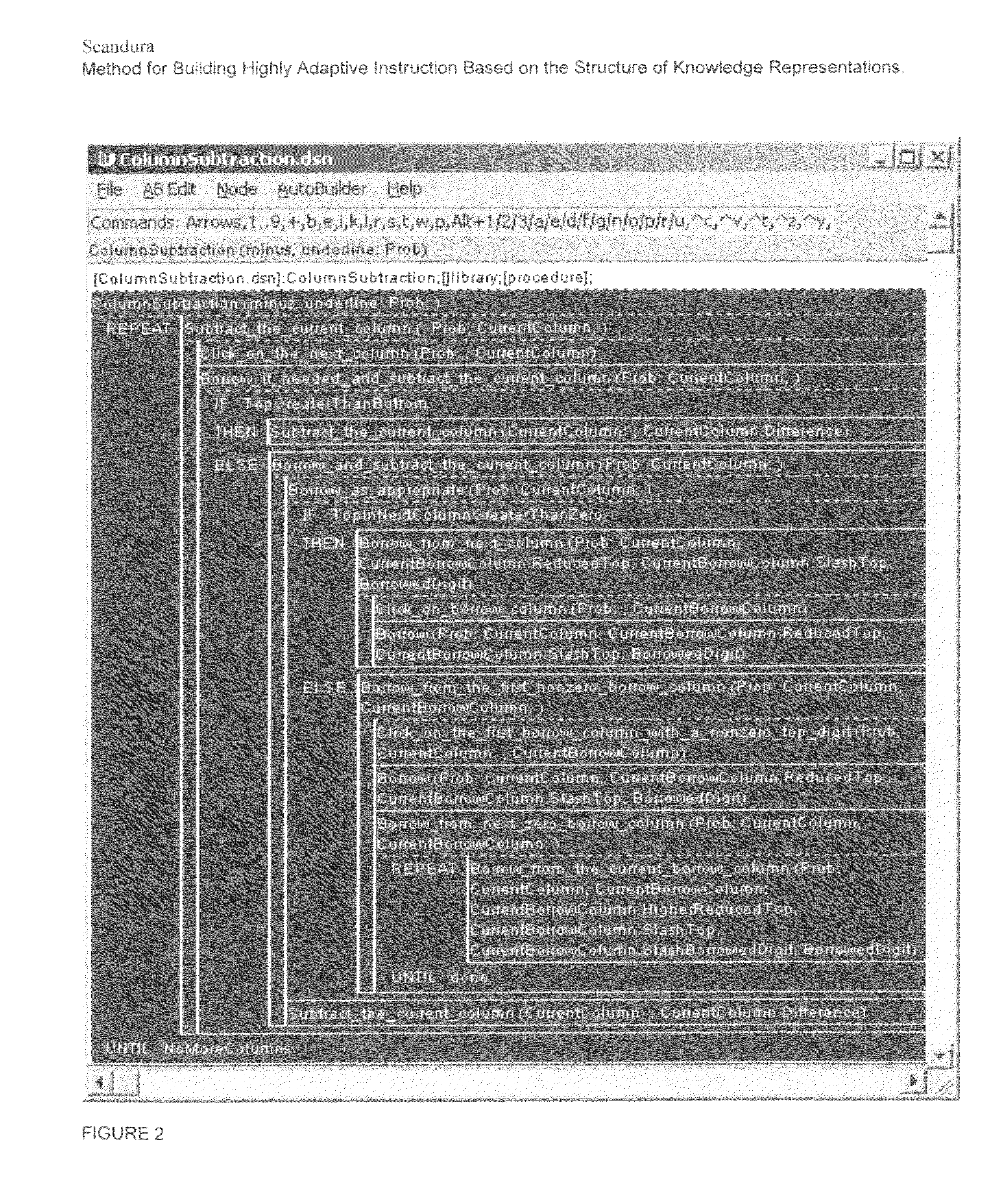Building and delivering highly adaptive and configurable tutoring systems
a tutoring system and highly adaptive technology, applied in the field of building and delivering highly adaptive and configurable tutoring systems, can solve the problems of difficult and expensive construction of good tutoring systems, difficult and expensive evaluation of educational benefits, and invariably direct empirical evaluation of effectiveness and efficiency. , to achieve the effect of efficient and reliabl
- Summary
- Abstract
- Description
- Claims
- Application Information
AI Technical Summary
Benefits of technology
Problems solved by technology
Method used
Image
Examples
Embodiment Construction
Part 1
1. Theoretical Advances: Well-Defined Knowledge
[0101]As above, there have been three fundamental advances in SLT in recent years. First is in the way knowledge is represented. SLT rules were originally represented as directed graphs (Flowcharts). They are now represented in terms of Abstract Syntax Trees (ASTs). Second is formalization of a key step in Structural (domain) Analysis (SA), enabling the systematic identification of higher order SLT rules that must be learned for success in ill-defined domains. Third is the complete separation of SLT's control mechanism from higher order knowledge. These advances distinguish knowledge representation in SLT from all others, and have fundamental implications for building adaptive tutoring systems.
[0102]In this section we consider the first advance: SLT rules have long been used to represent to-be-acquired knowledge in well-defined domains. While retaining the advantages of directed graphs, representing SLT rules in terms of Abstract ...
PUM
 Login to View More
Login to View More Abstract
Description
Claims
Application Information
 Login to View More
Login to View More - R&D
- Intellectual Property
- Life Sciences
- Materials
- Tech Scout
- Unparalleled Data Quality
- Higher Quality Content
- 60% Fewer Hallucinations
Browse by: Latest US Patents, China's latest patents, Technical Efficacy Thesaurus, Application Domain, Technology Topic, Popular Technical Reports.
© 2025 PatSnap. All rights reserved.Legal|Privacy policy|Modern Slavery Act Transparency Statement|Sitemap|About US| Contact US: help@patsnap.com



